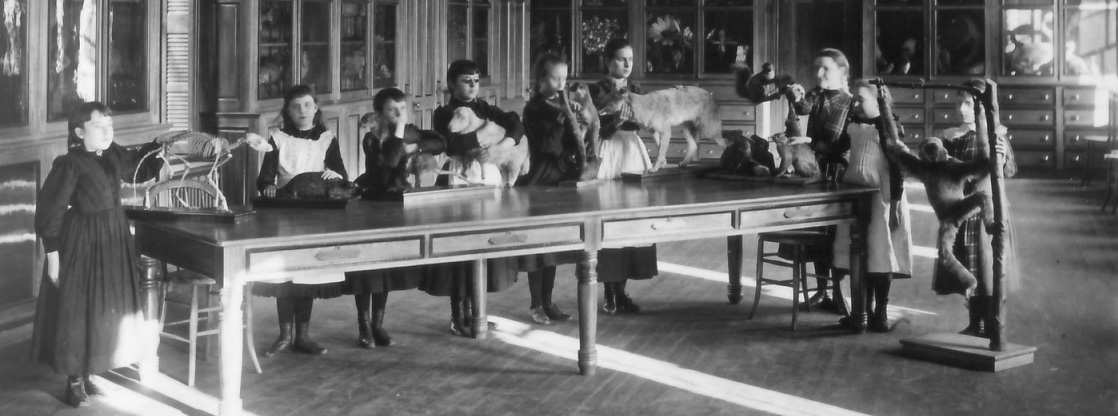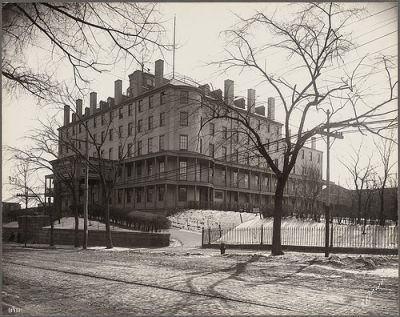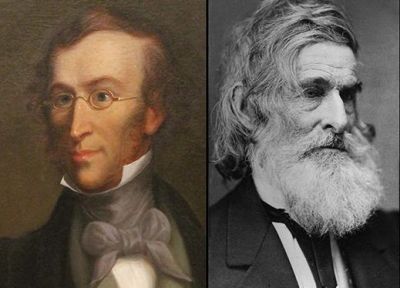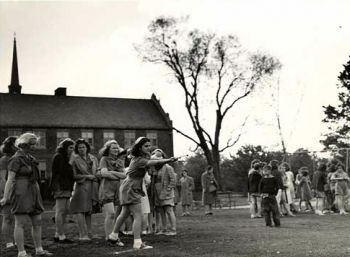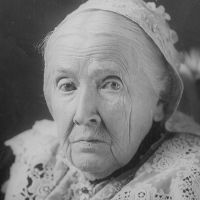Primary Source
In 1837, the principal of the Perkins Institute, Dr. Samuel Howe, made his first attempt to teach language to a deafblind child. His student was the gentle, delicate seven-year-old Laura Bridgman. He recorded his process in his journal.
"The first experiments were made by pasting upon several common articles, such as keys, spoons, knives, and the like, little paper labels on which the name of the article had been printed in raised letters…. So keen was the sense of touch in her tiny fingers that she immediately perceived that the crooked line in the word key, differed as much in form from the crooked lines in the word spoon, as one article differed from the other.
Next, similar labels, on the detached pieces of paper, were put into her hands, and she now observed that the raised letters on these labels resembled those pasted upon the articles. She showed her perception of this resemblance by placing the label with the word key upon the key, and the label spoon upon the spoon. A gentle pat of approval upon her head was reward enough; and she showed a desire to continue the exercise, though utterly unconscious of its purpose.
The same process was then repeated with a variety of articles in common use, and she learned to match the label attached to each one by a similar label selected from several on the table.
After continuing this exercise several days, with care not to weary her, a new step was taken. Articles were placed upon the table without having a label upon them, as a book, a knife, etc. Those loose printed labels, book, knife, etc., were placed upon the articles until she had felt them sufficiently, when they were taken off, and mingled in a heap. She narrowly watched the process by feeling her teacher's hands, and soon learned to imitate it by finding out the label for book, and placing it upon the volume; the same with the knife, etc...
The next step was to give a knowledge of the component parts of the complex sign, book, for instance. This was done by cutting up the label into four parts, each part having one letter upon it. These were first arranged in order, b-o-o-k, until she had learned it, then mingled up together, then re-arranged, she feeling her teacher's hand all the time, and eager to begin and try to solve a new step in this strange puzzle.
After several weeks of this, Laura experienced what Howe called the "supreme moment."
The poor child had sat in mute amazement, and patiently imitated everything her teacher did; but now the truth began to flash upon her, her intellect began to work, she perceived that here was a way by which she could herself make up a sign of anything that was in her own mind, and show it to another mind, and at once her countenance lighted up with a human expression; … I could almost fix upon the moment when this truth dawned upon her mind, and spread its light to her countenance; I saw that the great obstacle was overcome,…
Quoted in "The Education of Laura Bridgman," by Samuel Gridley Howe, reprinted in Annual Reports of Perkins Institution, 1837-1974.


